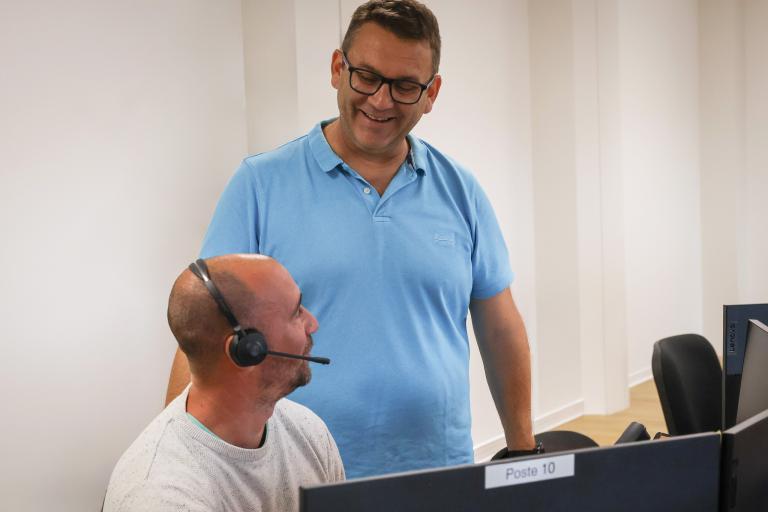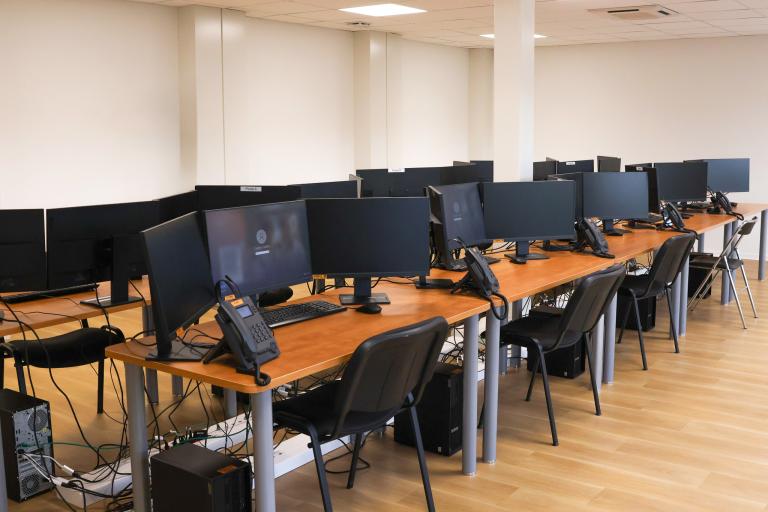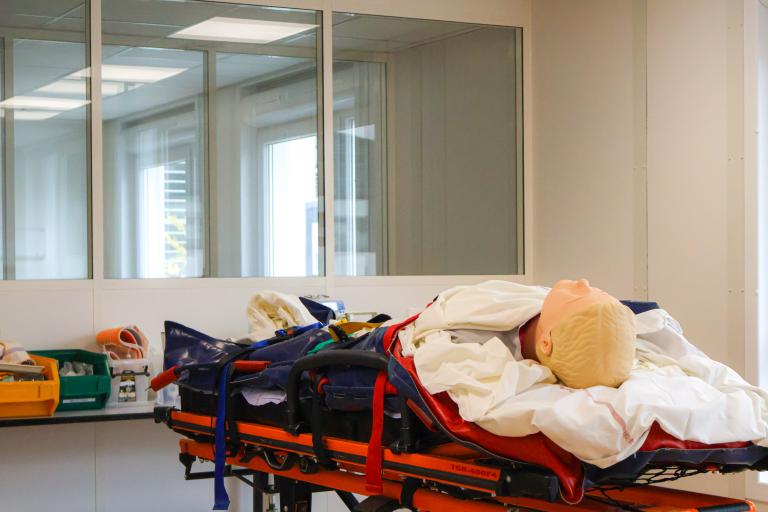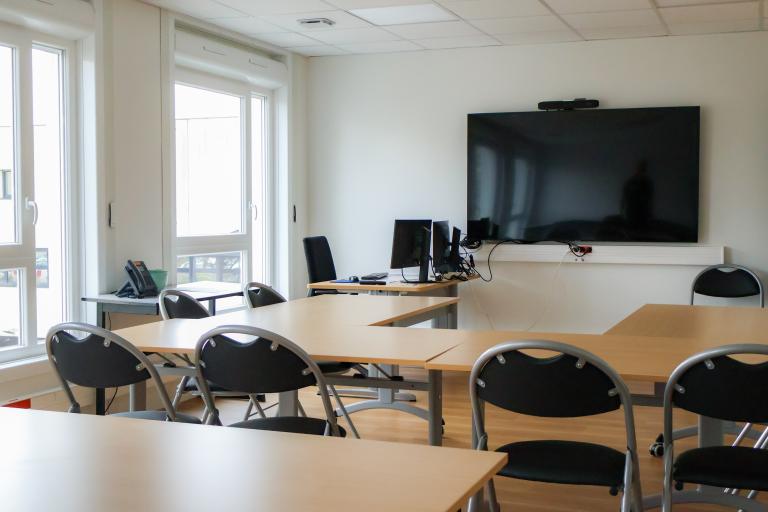Designed to meet the growing training needs of emergency professionals, this new modular building houses the activities of the Emergency Care Teaching Center (CESU) and the Training Center for Medical Regulation Assistants (CFARM). It offers a modern, flexible environment fully dedicated to simulation, the learning of technical procedures, and preparation for critical situations.


A major investment
This new educational space, approved by the Auvergne-Rhône-Alpes Regional Health Agency, strengthens the skills of SAMU teams by promoting realistic scenarios and training tailored to current challenges in medical regulation and prehospital intervention. It is part of a continuous improvement approach to the quality of care and the responsiveness of emergency services.
Valérie Durand-Roche, Chief Executive Officer of Clermont-Ferrand University Hospital (CHU)This new modular building embodies our commitment to placing training at the heart of the emergency medical response. By bringing together CESU and CFARM in a dedicated, modern, and adaptable space, we provide SAMU professionals with an environment conducive to learning, simulation, and skill development.
This is an important milestone for our institution, reaffirming its commitment to quality care, patient safety, and preparedness for critical situations. I would like to commend the teams who carried this project with conviction and thank our partners for their support.
Prof. Jeannot Schmidt, Head of the Emergency DepartmentThis long-awaited teaching tool will meet the expectations of the medical and nursing teams at our university hospital and many other partner institutions. It will also fulfill the requirements for high-quality training in emergency medicine practice—within hospitals, in SMUR units, and in medical regulation—both for initial training of residents enrolled in the specialized diploma in emergency medicine and for continuing education of practicing emergency physicians. This CESU-CFARM will also guarantee a quality response to the implementation of the SAS, the training of MCS, and the capacity expected by health authorities to handle exceptional health situations.
An innovative, sustainable, and modular building
With 840 m² of outdoor space (including 800 m² of usable area), this new SAMU training center stands out as a model of efficiency and modernity. Spread across several levels of 265 m², it features dedicated spaces for immersive training:
- CESU: 3 high-fidelity simulation rooms and 3 training rooms, including a multifunctional 60 m² room that can be converted into a department or crisis meeting room;
- CFARM: 1 practical training room or fallback space for the SAS and 1 theoretical training room.
Energy Performance and Environmental Responsibility
Compliant with the RE2020 environmental regulations, the building reduces its carbon footprint through low-carbon solutions and a design that considers the entire life cycle. Double-flow ventilation, heating and cooling via heat pumps, and smart management through a BMS system (heating, cooling, lighting, shutters): everything is optimized for comfort and energy efficiency. Lighting automatically adjusts to occupancy and brightness.
Materials and Modularity
Built from 51 removable and reusable modules, the building prioritizes flexibility. The CESU floor is equipped with modular partitions, allowing spaces to be easily reconfigured. Interior insulation made from recycled textiles ensures optimal acoustic comfort, while the exterior cladding in TRESPA HPL panels (70% natural fibers) guarantees durability of over 50 years.

Emergency Care Teaching Center | CESU
Located at the heart of public hospitals that host SAMU services, Emergency Care Teaching Centers hold a strategic position in training healthcare professionals. Their mission is clear: to prepare medical and paramedical teams to intervene effectively, whether in the daily care of patients or in exceptional situations. This requirement for competence and responsiveness is a major challenge for the health security of the region.
The CESU serves a wide audience: doctors, nurses, paramedics, as well as administrative and technical professionals. Training programs are designed and delivered by field experts—emergency physicians, nurses, and paramedics—who bring their hands-on experience of emergency situations. This immersive and multidisciplinary approach ensures learning that can be directly applied in practice.
Each year, CESU 63 welcomes several thousand trainees and offers a wide range of courses, from fundamental emergency care techniques to specialized modules. Among the most popular programs is the Emergency Care and Procedures Training Certificate, offered at two levels, which forms an essential foundation for any professional facing critical situations. These courses are complemented by targeted programs such as adapting SMUR teams to hostile environments, urgent medical care, and training for nurses responsible for triage or emergency reception areas. These programs address specific and evolving needs, aligned with real-world challenges.
The CESU is also evolving by developing new offerings, such as training for paramedicalized mobile hospital units, the role of SAMU liaison physicians, and the management of call reception and regulation centers. These developments reflect a constant commitment to anticipating health challenges and supporting the transformation of hospital practices.
Beyond technical skills, the CESU plays a vital role in crisis preparedness. It is a key player in training for exceptional health situations, which require full mobilization of CHU professionals and flawless coordination. These exercises, integrated into the programs, strengthen collective capacity to respond to unforeseen events and ensure continuity of care.
Training Center for Medical Regulation Assistants | CFARM
Opened in partnership with the Hospices Civils de Lyon, the Auvergne-Rhône-Alpes CFARM is a key link in the emergency response chain, training medical regulation assistants (ARM) each year—the first point of contact for callers to 15 in case of emergency. This strategic partnership is fully aligned with an ambitious regional initiative led by healthcare stakeholders in Auvergne-Rhône-Alpes, aimed at strengthening the quality of medical regulation and further professionalizing emergency care roles.
As a true cornerstone of medical regulation, the ARM receives, listens to, and analyzes each call with composure and precision. Their mission: prioritize emergencies, activate appropriate resources under the decision of the regulating physician, and support the management of exceptional situations. This role demands strong interpersonal skills, the ability to manage stress—both their own and that of callers—and unwavering concentration in a confined and noisy environment.
Through innovative teaching methods combining high-fidelity simulation and immersive internships, CFARM offers a rigorous, Qualiopi®-certified program that equips students with the key skills for the role: active listening, stress management, reassuring communication, and effective coordination of emergency services. Lasting one year, the program leads to the Medical Regulation Assistant diploma, registered at Level 4 of the RNCP.
This integrated work-study program spans 41 weeks (1,470 hours), evenly divided between theory and practice. The 21-week theoretical component provides foundational skills, complemented by immersive internships in real-life settings. In 2025, eight students joined the training in Clermont-Ferrand, becoming part of a regional network of professionals committed to serving the population.
Upon graduation, ARMs can work in 15 centers (CRRA), as well as on medical repatriation platforms or out-of-hours care regulation services.




